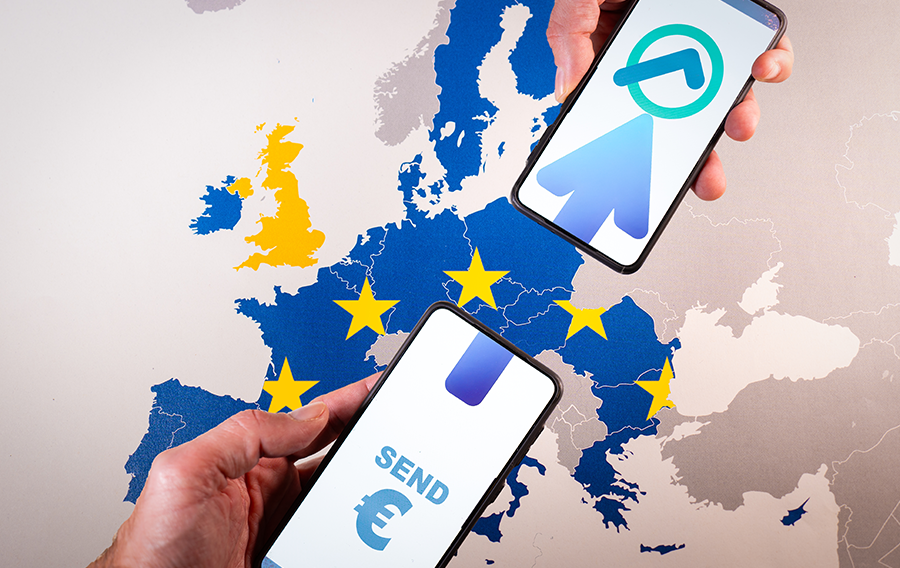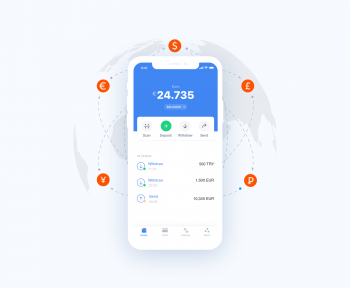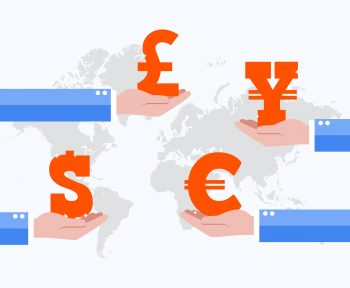It is a well-known truth that payments and online money transfers in Europe were pricey as well as all around the world. Besides paying a fee for sending, medium banks used to cut a big part of the whole amount. These fees and costs were slowing the financial movement in the zone but also frightening the entrepreneurs who are intending to set up a business. Monitoring the issue and adding the motto of “United in diversity”, the European Union came up with a revolutionary idea for its residents. To improve common financial instruments, standards and lower the transfer fees and costs, a new complete scheme was shaped. SEPA!
The European Union introduced the SEPA network in 2008. The framework has been developed in years and has taken the ultimate shape in 2014 where all networks are aligned and operate smoothly all across Europe.
If you are looking for a cashless solution for your payments across Europe, SEPA may be a good option for you and your business. On a side note, SEPA transfers are not always known to be the fastest transaction solution within Europe, but sometimes delays are inevitable. These delays can often be caused by infrastructure problems or possible maintenance problems. Before we see how SEPA Transfers work, let’s find out what SEPA is.
What is SEPA?
SEPA (Single European Payment Area) is a great success to ease international payments in the Europe line. Institutions in Europe finally took a deep breath after struggling with the exhausting extra charges for years. The facilitation triggered the circulating money flow and the European Economy gained a visible acceleration. We can show SEPA payments as one of the reasons for the strength of the union today. Today, SEPA transfers enable both businesses and people to send/receive fast, trustworthy and local-like cross-border money transfers. Since the introduction of the SEPA payment method scheme in February 2014, millions of residents in all participating countries are benefiting from the ease and functionality.
Another aspect of the SEPA area is that it symbolises the strong alignment of the European Union. Even though there are 27 different countries that are using the same currency there are different regulations in the banking area. With the SEPA network the European Union has succeeded to reach a standardisation across its borders. This standardisation aimed to enhance the banking operations for both individuals and business. The smooth banking operations are the key to growth of the businesses. With competitive rates and less delays in online money transfers SEPA have become the most used network within Europe.
How does SEPA Work?
SEPA accounts work through IBAN numbers that are provided by financial institutions that are located within Europe or offering services and products within the SEPA network. If you already have an account that is allowed to operate within the SEPA zone then you can benefit from all the advantages of SEPA transactions. If a business owner that lives and operates in the SEPA zone then these types of transactions are excellent solutions for the business.
There is a general misunderstanding about SEPA transfers. People generally think that SEPA transactions are only used by businesses however this is not correct. Any individual that meets the requirements of a SEPA account may benefit from advantages of SEPA such as faster transactions with low cost efficiency across the EU.
Before opening an account and starting using SEPA transactions, it is important to understand what type of SEPA transfers are provided by financial institutions and how the SEPA network operates.
SEPA transfers also have a minimum and maximum limit. Before you schedule your transactions please also double check these limits. At this point we will view the differences and limits between schemes of SEPA payments. These schemes are:
-The SEPA Credit Transfer : SCT (SEPA Credit Transfer) can be defined as an online payment method denominated in Euro between two bank accounts in the Eurozone network. By 2020, SEPA has become the preferred way to pay across Europe. SEPA Credit Transfers have a maximum transfer limit of €999,999,999.99 (i.e. one cent short of one billion euros).
You can not handle your SEPA money transfers manually either with the help of a bank official or by yourself such as via a digital wallet app. Cash flow is transferred between Originator Bank and Beneficiary Bank.
-The SEPA Instant Credit Transfer : SCT Inst (SEPA instant) is a successful credit transfer mechanism delivering bank transfers in Euro within the blink of an eye. You can send up €100,000 at a time with SEPA Instant Credit Transfers.
-The SEPA Direct Debit: Being one of the most used schemes of SEPA, this is a pre-authorized SEPA payment method which automatically gets deducted from the account on a pre-decided date. As you may understand, it is used to pay taxes, loans, credit cards, utility bills, rents and other monthly ongoing services. Thanks to SEPA Direct Debit, users can not miss a payment deadline such as unpaid taxes and water bills. In SEPA Direct Debit there is no fixed transfer limit.
In order to understand which type of SEPA transactions suit your needs best, it is essential to identify your priorities and values. If you are a merchant dealing with high volume payments that needs fast transactions across Europe then SEPA instant Credit Transfer might be the best option for you. If you are just handling transactions less than €100,000 we recommend you to go for the SEPA instant Credit Transfer which will allow you to save time.
If you prefer to use SEPA transfers for your individual transactions then the SEPA Direct Debit option is a better solution for you. Now you have all the necessary information and you can choose the best service.
What information do you need for a SEPA transfer?
There is no additional or different information needed for SEPA transfers. The required information in order to make a SEPA transfer are generally the same for all the financial institutions whether it is a traditional bank or online payment provider.
To initiate a SEPA transfer, you usually need the following information:
Recipient’s name — the full name of the person or company receiving the funds.
Recipient’s IBAN — a unique identifier for the bank account where you’re sending the money. It consists of a country code, check digits, and the account number.
Amount — the exact amount of money you wish to transfer.
Currency — the currency that you’re using for the transfer. (This is generally the EURO however as some European countries have not adopted the Euro as their national currency, you need to be aware of the currency difference, you can check the list of countries that are in the Euro zone yet using their own currency.)
Your name and address — your full name and address, as the sender of the funds.
Your bank account details — your own bank account number, IBAN, and BIC.
Some providers might ask for additional information such as your email address or phone number. If you haven’t verified your account then first you might need to verify your account with additional documents.
If you face any problems with SEPA transactions please contact the customer service of your provider. They can guide you through the process.
Are SEPA Transfers Free?
We know that the European Union has been working on an alignment and standardisation of processes and regulations within Europe. Despite the fact that they have come a long way, not every country has equal capacity to offer the same services due to the banking infrastructure that they have. The aim of SEPA is to be free of charge within Europe but it is still not possible to reach this level. There are a couple of reasons. Even though in most cases SEPA transactions are more low cost. There are still additional fees that may occur in some countries.
According to the EU regulations, in fundamentals, transfers between two SEPA banks must not cost more than a domestic money transfer. But some countries such as Spain, Italy and Bulgaria still have serious issues about setting SEPA costs by adding extra charges for your incoming money flow. However, in general, a SEPA transfer costs €1 flat fee via your mobile phone. If you want to avoid those types of costs, you might want to choose a payment provider that operates smoothly in all European countries equally. Today there are many available options on the internet. With the digitalization of the banks and financial institutions, we don’t need to rely on traditional banks.
Hidden costs that may occur in SEPA Payments
SEPA payments are generally promoted as free ways to move money across Europe. However, like we mentioned, many banks impose additional fees and they don’t say it out loud. Here it is up to you to find out if there might be any hidden cost during your SEPA transactions.
Here is a list of some potential hidden costs for you:
General Transfer fees: many banks charge a fee for initiating SEPA transfers. These fees are not fixed fees and may vary significantly between banks and are often not prominently disclosed. This also depends on the banks’ infrastructure if they use different intermediaries then these costs might be higher.
Recipient fees: some banks also charge the recipient a fee to receive a SEPA transfer. This can be inconvenient for businesses and individuals who frequently receive payments. Make sure to read carefully the terms and conditions of the bank or financial institution that you chose for your SEPA transfers. If you can’t figure out these fees, you can contact customer service and get information about these fees.
Shared Costs (SHA) method: in this method, the sender and recipient share the transfer costs. While it might seem fair, it still means that both parties pay.
Currency conversion fees: if the transfer involves currency conversion, extra fees may apply, even though SEPA transactions are supposed to be in euros. Today not only traditional banks but also online payment providers provide SEPA transfer options. If you chose a multiple currency account then you might avoid these extra costs.
Account maintenance fees: some banks may include SEPA transfer costs within broader account maintenance fees, making it harder to understand the true cost of each transaction.
These hidden fees can add up, undermining the cost-effectiveness of SEPA transfers and complicating financial planning for both individuals and businesses. If your main goal is to save money please inform yourself about possible hidden costs and take necessary action to avoid these fees.
In conclusion, the existence of SEPA payments opened a spectacular path for both individuals and businesses in the Eurozone. Not only the reliability but also speed of the SEPA money transfers are satisfying. A general time frame of a SEPA transfer takes 1-2 business days. But in most cases, the amount arrives in the beneficiary bank the next business day. Furthermore, “How to make a SEPA payment?” is a pretty simple process. Just go to your mobile banking and operate your transfer using the IBAN and names of the beneficiary. The whole system works so seamlessly that it would be unfair not to appreciate the original genius team behind this epochal initiative.
Jeton has been operating in the SEPA area and has reached more than millions of users that benefit from SEPA transactions with Jeton. If you don’t have a Jeton account yet you can go and open your Jeton account by just one click.
You can manage all your financial transactions across Europe with a single Jeton account. With the Jeton app you can make instant SEPA payments or plan your payment schedule at the lowest cost. It is very easy to open an account with Jeton. Whether for individual or business purposes Jeton provides excellent, secure and fast transactions.
If you are worried about hidden fees of SEPA transactions, just contact our customer service and they will guide you through all the pricing information. If you want to grow your business and provide a satisfactory service for your customers Jeton is a great option.



